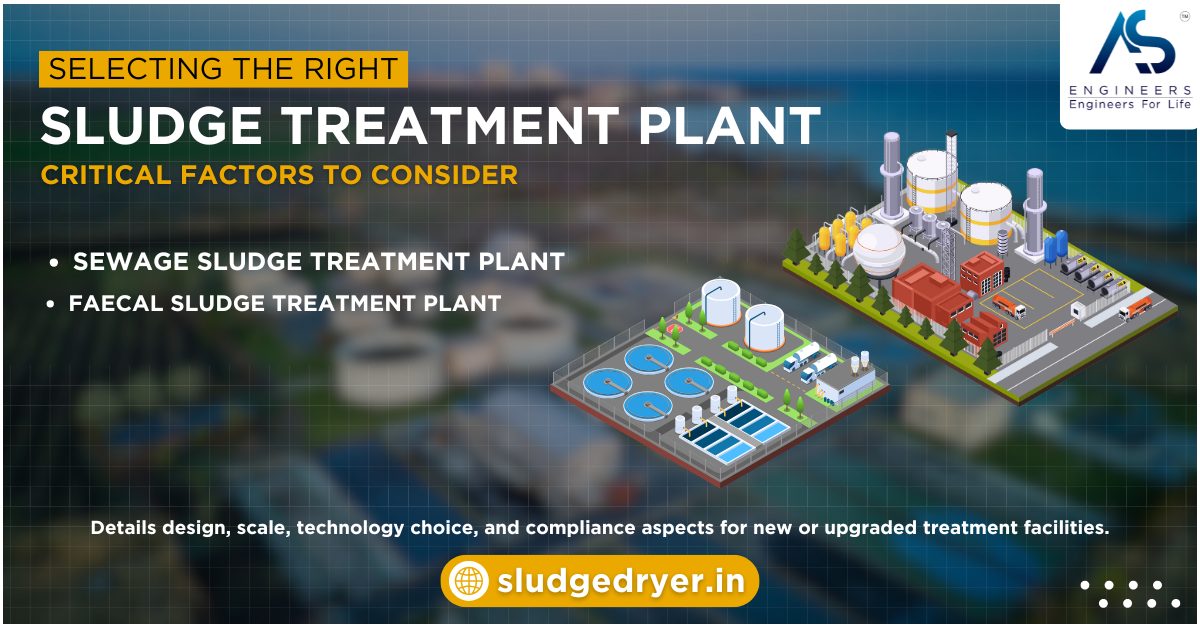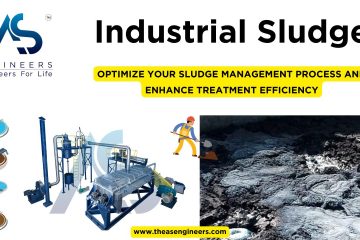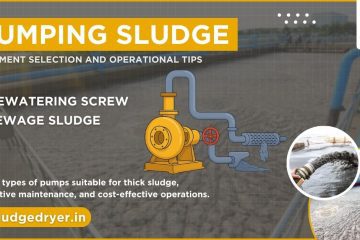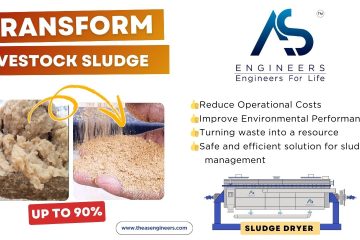Did you know that global wastewater treatment plants collectively produce millions of tons of sludge every year, creating one of the most pressing operational and environmental challenges in modern water management? If you are in the process of upgrading or building a new sludge treatment plant, it is crucial to understand the key design factors, compliance requirements, and technology options that will affect your facility’s long-term performance.
This guide aims to clarify those factors, whether you are looking to handle municipal sewage, manage a faecal sludge treatment plant for urban sanitation, or operate a specialized sewage sludge treatment plant in an industrial setting. Read on to learn how to select the right treatment approach, optimize costs, and ensure your operations remain in strict regulatory compliance.
Table of contents
- 1. Understanding Sludge and Its Challenges
- 2. Why Sludge Treatment Matters
- 3. Key Considerations in Selecting a Sludge Treatment Plant
- 4. Plant Design Elements
- 5. Technologies for Sludge Treatment
- 6. Addressing Faecal Sludge Treatment Plant Needs
- 7. Real-World Examples and Case Studies
- 8. Common Challenges and How to Overcome Them
- 9. Frequently Asked Questions (FAQ)
- 10. Myth-Busting Section
- Conclusion
1. Understanding Sludge and Its Challenges
Sludge is the semi-solid byproduct derived from wastewater treatment processes, including municipal sewage, industrial effluents, and even specialized waste streams like agricultural runoff. At first glance, it may look like one homogeneous mass, but in reality, sludge varies widely in composition. Factors such as the origin of wastewater, the chemicals used in treatment, and the presence of industrial discharges heavily influence sludge characteristics.
1.1 Physical and Chemical Composition
- Organics: Primarily proteins, fats, carbohydrates.
- Inorganics: Grit, metals, mineral deposits.
- Pathogens: Bacteria, viruses, parasites.
- Chemical Residues: Depending on industrial sources, sludge can carry solvents, oils, or toxic compounds.
1.2 Diverse Origins
- Municipal Sewage: Predominantly household waste mixed with commercial effluents.
- Industrial Effluents: May contain higher levels of heavy metals or synthetic chemicals.
- Faecal Sludge: Collected from pit latrines, septic tanks, or onsite sanitation systems in areas without centralized sewers.
Each type of sludge presents unique handling, stabilization, and disposal challenges, shaping how a sludge treatment plant must be designed.
1.3 The Environmental Concern
When left unmanaged, sludge can contaminate soil, pollute water bodies, and release greenhouse gases. Overloaded or poorly maintained systems also raise major public health risks, especially in densely populated regions. Proper sludge treatment is thus an environmental imperative, not just an operational necessity.
2. Why Sludge Treatment Matters
In many regions, regulations have become stricter regarding sludge disposal and emissions, significantly impacting how a sewage sludge treatment plant must be run. Going beyond mere compliance, robust sludge treatment yields multiple benefits:
- Public Health Protection: Proper pathogen reduction lowers the risk of disease outbreaks.
- Environmental Safeguards: Avoid leachate entering groundwater and reduce harmful gas emissions.
- Resource Recovery: Many sludge treatment methods allow for energy capture (e.g., biogas) or nutrient recycling (fertilizers, compost).
- Operational Efficiency: Well-managed sludge handling prevents bottlenecks in wastewater treatment lines and helps facilities run smoothly.
- Cost-Effectiveness: Effective treatment can reduce hauling fees, landfill costs, and potential regulatory fines.
When carefully planned, a modern sludge treatment plant can transform waste into valuable resources, aligning with global sustainability trends and circular economy principles.
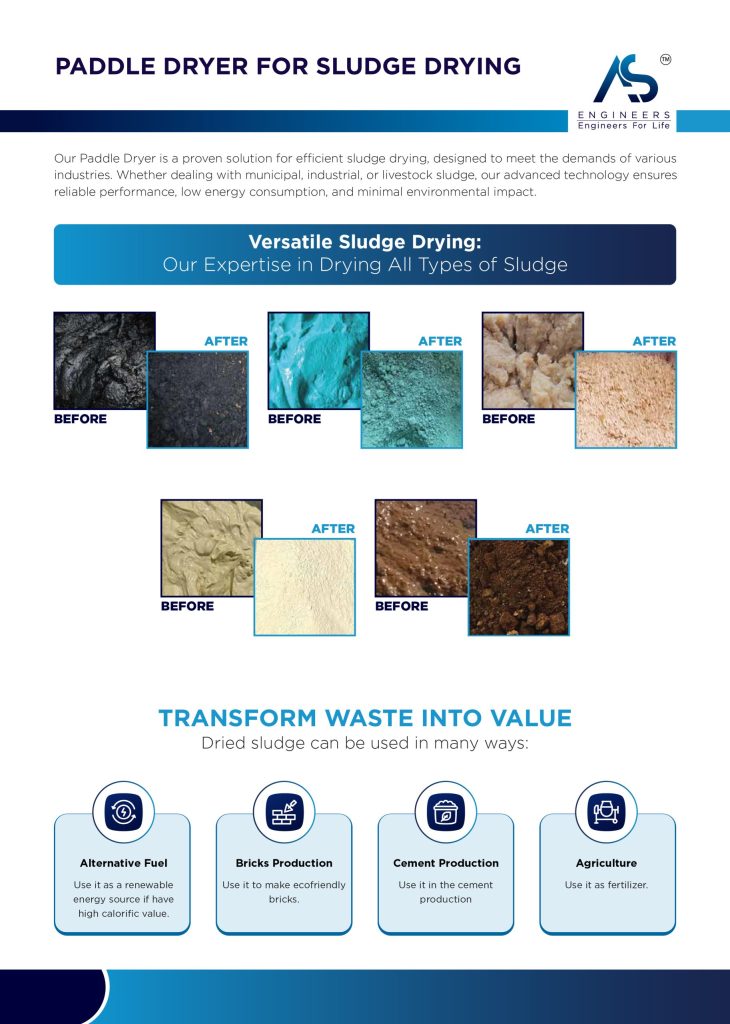
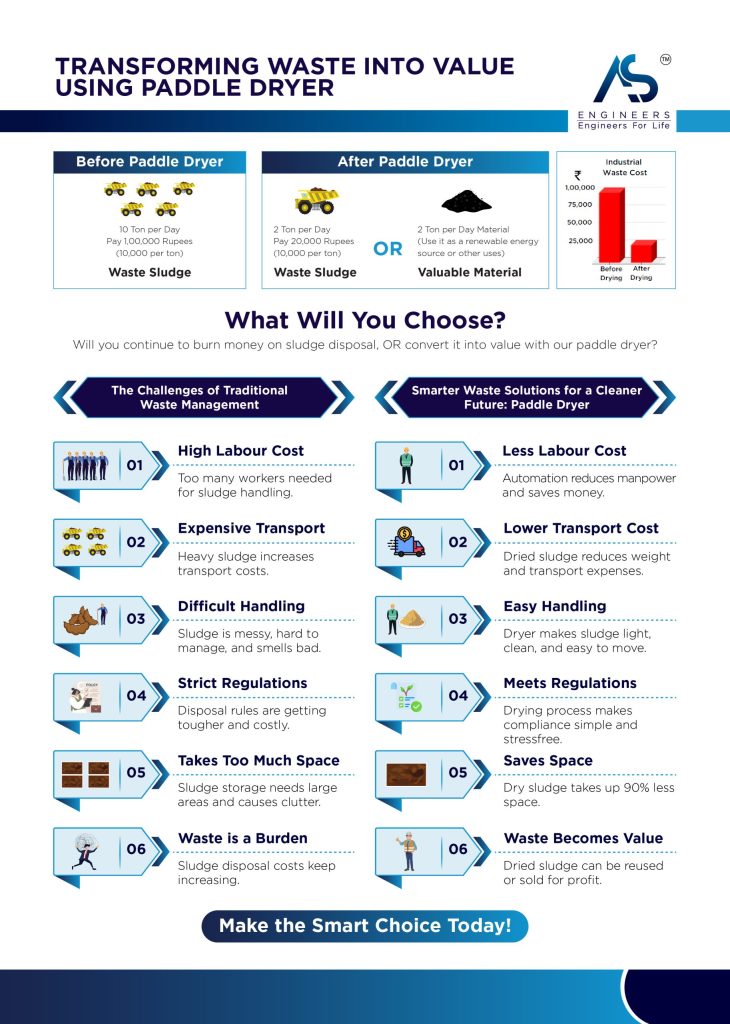
3. Key Considerations in Selecting a Sludge Treatment Plant
Choosing or designing the right sludge treatment plant is a multi-faceted endeavor. Below are core variables that shape your decision-making process.
3.1 Sludge Characteristics
As previously mentioned, no two sludge streams are the same. A thorough sludge analysis is critical:
- Solid Content: Determines the scale of dewatering and thickening needed.
- Volatile Solids: Indicates how much organic matter is present, influencing digestion potential.
- pH and Chemical Makeup: Guides process selection and polymer dosing.
- Heavy Metals and Toxins: May necessitate specialized treatments or disposal routes.
Start by collecting representative samples and conducting lab tests. Then, match the treatment processes to the identified properties.
3.2 Capacity and Scalability
How much sludge do you need to handle daily, monthly, or annually? Projecting future loads is equally important—especially if population growth or industrial expansion will increase sludge production. Overloading a plant leads to performance shortfalls, while an oversized system can waste capital and operational resources.
- Current Flow Rate and Peak Loads
- Population Growth Estimates
- Industrial Growth Forecasts
Aim for a modular design to accommodate scaling without massive overhauls if your community or industry is expanding.
3.3 Regulatory Compliance
Local, regional, and national laws dictate how sludge must be treated or disposed of. Some key regulations:
- Biosolid Standards: Mandate pathogen limits, heavy metal thresholds, etc.
- Air Quality Rules: Especially relevant for incineration or thermal drying.
- Disposal Bans or Restrictions: Certain areas may prohibit landfilling or ocean dumping.
- Effluent Discharge Limits: If you discharge any liquid effluent from your plant.
Always factor in the possibility of stricter future regulations, particularly concerning emerging contaminants like PFAS.
3.4 Technology and Process Selection
Technological choices abound, from simple stabilization methods to advanced thermal solutions. Thoroughly evaluate each option’s pros, cons, and suitability to your sludge characteristics.
Consider:
- Anaerobic vs. Aerobic Digestion
- Thermal Drying vs. Mechanical Dewatering
- Composting vs. Incineration
- Chemical Stabilization vs. Biological Methods
No single technology is universally superior; the best fit emerges from balancing cost, efficiency, and local environmental constraints.
3.5 Land and Footprint Requirements
Some processes require extensive space (e.g., compost windrows, large drying beds). Others are more compact (e.g., vertical flow reactors, mechanical presses). The acreage available at your site can eliminate or confirm certain technologies.
Also Consider:
- Buffer Zones: Mitigate odors or noise for nearby residents.
- Infrastructure Compatibility: Access roads, drainage, and space for future expansions.
3.6 Energy and Resource Recovery
Many advanced plants aim to be energy self-sufficient by capturing methane from digestion or harnessing heat from incineration. You might also explore nutrient recovery technologies (like struvite formation) to sell or reuse valuable fertilizer components.
- Biogas-to-Power
- Combined Heat and Power (CHP)
- Biosolid Pellets for Agriculture
- Compost Production
Assess local markets and regulations to determine the revenue viability of resource recovery.
3.7 Cost Analysis and Budgeting
Beyond initial capital costs, total ownership expenses—maintenance, staffing, energy consumption, chemical usage—determine the long-term feasibility of your sludge treatment plant.
Budget Considerations:
- Capital Expenditures (CAPEX): Land, construction, equipment.
- Operating Expenditures (OPEX): Power, labor, polymers, disposal fees.
- Financing Mechanisms: Public-private partnerships, municipal bonds, government grants.
- Lifecycle Cost Analysis: Evaluate 10-20 year cost horizons to avoid short-term pitfalls.
3.8 Operation and Maintenance
A high-tech facility can promise tremendous efficiency but might require specialized technicians, advanced instrumentation, and consistent spare-part availability. Conversely, simpler methods (like drying beds or composting) often have lower operational complexity but may demand more land or produce odors if not carefully managed.
Ask Yourself:
- What skill sets do my operators have?
- Are remote monitoring and automation feasible?
- Will I rely on external contractors for major maintenance?
Always balance complexity with reliability in your context.
4. Plant Design Elements
Once you have clarified the major site and technology considerations, it’s time to delve into specific design components.
4.1 Pre-Treatment Systems
Pre-treatment ensures that large debris, grit, and other troublesome materials do not damage equipment downstream.
- Bar Screens and Rakes: Capture rags, plastics, and other large objects.
- Grit Chambers: Remove sand, gravel, and small stones.
- Equalization Tanks: Buffer flow rate spikes and homogenize sludge composition.
Investing in robust pre-treatment saves money in the long run, reducing wear and tear on pumps, digesters, or mechanical presses.
4.2 Thickening and Dewatering Units
Thickening is the process of increasing the solid concentration of sludge before further treatment. Dewatering pushes that concentration even higher, often using mechanical devices.
- Gravity Thickeners: Simple but large footprint.
- Dissolved Air Flotation (DAF): Ideal for lighter solids with high grease or oil content.
- Belt Filter Presses: Common in municipal plants.
- Centrifuges: Compact and efficient but can be energy-intensive.
- Screw Presses: Low-speed, low-energy option with modest throughput.
Your choice influences polymer usage, operational complexity, and dryness of the final sludge cake.
4.3 Stabilization Methods
Stabilization reduces odors, pathogens, and the potential for putrefaction, making sludge safer for reuse or disposal.
- Anaerobic Digestion: Oxygen-free microbial breakdown; produces biogas.
- Aerobic Digestion: Microbes consume organics with ample oxygen supply; simpler but can require more energy.
- Chemical Stabilization (e.g., Lime): Quickly raises pH to kill pathogens.
- Composting: Sludge is mixed with bulking agents (wood chips, yard waste) and turned regularly.
Each method yields different byproducts, from usable biogas to compost suitable for agricultural applications.
4.4 Advanced Treatments
For facilities with stricter goals, advanced processes can upgrade sludge to high-quality end products or reduce volume drastically.
- Thermal Drying: Reduces moisture to produce pelletized or granular products.
- Thermal Hydrolysis: High pressure and temperature pre-treat sludge before digestion, enhancing biogas yield.
- Pyrolysis/Gasification: Converts sludge into syngas, biochar, or oils under limited oxygen conditions.
- Incineration: Complete combustion at high temperatures, leaving ash that may require specialized disposal.
While advanced methods can cost more and demand complex operations, they often align well with resource recovery or stringent disposal requirements.
4.5 Odor and Emissions Control
Odor complaints can derail public acceptance of any sludge treatment plant. Similarly, regulatory bodies keep a close watch on emissions from incineration, composting, or open-air processes.
- Biofilters and Scrubbers: Common for composting or digestion exhaust streams.
- Enclosed Systems: Minimizing open-air exposure reduces odor and airborne pathogens.
- Emission Controls: Incinerators or thermal dryers often need advanced filters, scrubbers, or electrostatic precipitators.
A good design anticipates these challenges from the outset, rather than treating odor control as an afterthought.
5. Technologies for Sludge Treatment
5.1 Anaerobic Digestion
A staple in many municipal and industrial settings, anaerobic digestion excels at handling high organic loads. The process occurs in sealed tanks at controlled temperatures, typically yielding biogas composed of methane (60–70%) and carbon dioxide (30–40%).
Pros:
- Generates renewable energy (biogas).
- Minimizes sludge volume by 40–60%.
- Reduces pathogens to relatively low levels.
Cons:
- Requires stable temperature and pH to maintain microbial health.
- Complex process control (e.g., mixing, feeding rates).
- Produces a final digestate that might still need dewatering.
5.2 Aerobic Digestion
Here, oxygen-dependent microbes break down organic matter. While simpler in concept than anaerobic digestion, aerobic systems can be more energy-intensive.
Pros:
- Straightforward operations.
- Produces less odor compared to some other processes.
- Effective pathogen reduction.
Cons:
- High energy demands for aeration.
- Limited energy recovery potential.
- May require extended retention times to meet Class A biosolid standards.
5.3 Thermal Drying
Thermal drying is used to significantly reduce the moisture content of sludge, often aiming for a product with 90% or higher solids.
Methods:
- Rotary Dryers: Slowly rotate sludge through a heated drum.
- Fluidized Bed Dryers: Hot air suspends sludge particles, ensuring uniform drying.
- Belt Dryers: Move sludge on a perforated belt with heated air passing through.
Pros:
- Final product is lightweight and stable, ideal for fertilizer pellets or energy feedstock.
- Reduces transportation costs dramatically.
Cons:
- High capital and energy costs.
- Potential dust or VOC (volatile organic compound) emissions.
- Requires skilled operation to prevent fires or explosions in certain conditions.
5.4 Composting
A biological process that transforms sludge mixed with bulking agents into a humus-like material. Common composting methods include windrow, aerated static pile, and in-vessel systems.
Pros:
- Produces a valuable soil amendment.
- Moderately low-tech, suitable for smaller communities.
- Minimizes greenhouse gas emissions if managed correctly.
Cons:
- Requires substantial space and can generate odors if not well-aerated.
- Process can take weeks to months.
- Potential for leachate if precipitation is not managed.
5.5 Incineration and Co-Processing
Incineration burns sludge at very high temperatures, yielding ash as the principal byproduct. Co-processing in cement kilns or power plants is another variant, where sludge acts as supplemental fuel.
Pros:
- Drastically reduces sludge volume—often by 90% or more.
- Destroys pathogens and most hazardous organics.
- Potential energy recovery from steam or heat.
Cons:
- Expensive emissions controls are needed to meet air quality regulations.
- Ash might contain concentrated metals, requiring careful disposal.
- High capital and operating costs.
6. Addressing Faecal Sludge Treatment Plant Needs
In many developing regions, centralized sewage networks are incomplete or nonexistent. As a result, pit latrines and septic tanks generate faecal sludge that must be handled differently than typical municipal sewage.
Key Differences:
- Higher Solid Concentration: Faecal sludge is often denser, with high organic loads and debris like rags or plastic bags.
- Inconsistent Composition: Seasonal usage, household habits, and water availability create broad variability.
- Manual or Small-Scale Collection: Vacuum trucks or manual emptiers typically gather pit latrine waste.
Treatment Strategies:
- Settling-Thickening Tanks: Efficient for separating solids from supernatant.
- Drying Beds: Low-tech but can be labor-intensive.
- Co-Treatment: If possible, add faecal sludge to existing municipal systems with caution—avoid overloading processes.
- Decentralized Facilities: Use smaller-scale digesters, composting systems, or thermal solutions suited to community-level volumes.
Ensuring a robust faecal sludge treatment plant design is vital for public health in areas where on-site sanitation is prevalent. These facilities often serve as a bridge between basic sanitation and more advanced solutions.
7. Real-World Examples and Case Studies
7.1 Municipal Anaerobic Digestion Success
A mid-sized city in Europe replaced outdated sludge drying beds with anaerobic digesters. The plant’s operators captured biogas to power blowers for the sewage treatment process, slashing electricity costs by 40%. They also sold surplus electricity back to the grid. The final digestate was then dewatered to produce Class B biosolids, applied to local farmland under carefully monitored regulations.
7.2 Industrial Sludge Incineration in Asia
An industrial hub in Southeast Asia, home to textile and metal-plating factories, built a centralized sewage sludge treatment plant with incineration capacity to handle the region’s high-metal sludge. By installing advanced scrubbers and filters, the facility met stringent air quality standards. Moreover, leftover ash was stabilized and used in cement manufacturing, creating a near-zero-waste loop.
7.3 Faecal Sludge Management in Africa
In an African metropolis grappling with informal settlements, local authorities set up a specialized faecal sludge treatment plant with settling-thickening tanks and simple drying beds. Sludge volumes were manageable, and the dried product was co-composted with organic waste. The end result was a nutrient-rich material sold to nearby farmers. The pilot project significantly reduced open dumping and boosted community health indices.
8. Common Challenges and How to Overcome Them
Even the most well-planned sludge treatment plant faces hurdles, ranging from technology adoption to community acceptance. Here’s how to anticipate and mitigate them.
8.1 Odor Complaints
Challenge: Neighbors protest the “sewage smell,” jeopardizing plant expansions or even operations.
Solution: Invest in effective covers, enclosures, or biofiltration systems. Promptly address complaints through open communication, odor monitoring, and rapid corrective action.
8.2 Inadequate Expertise or Staff Turnover
Challenge: High turnover among skilled operators can reduce efficiency and lead to unplanned downtime.
Solution: Offer regular training sessions, competitive salaries, and well-documented standard operating procedures (SOPs). Automation and SCADA systems can also help maintain continuity despite staffing changes.
8.3 Underestimated Sludge Volumes
Challenge: Many facilities plan for average loads without accounting for peak surges.
Solution: Include safety margins and modular expansions in the plant design. Monitor upstream processes (e.g., industrial discharge) to anticipate volume spikes.
8.4 Financial Constraints
Challenge: High capital expenditures deter municipalities and smaller industries from adopting advanced solutions.
Solution: Explore public-private partnerships, government subsidies, or revenue from byproducts (biogas, compost, recovered metals). Perform a long-term cost-benefit analysis to justify investment.
8.5 Regulatory Shifts
Challenge: Evolving rules on contaminants like PFAS or microplastics can force abrupt process changes.
Solution: Remain vigilant via industry associations, policy trackers, and research collaborations. Incorporate flexible designs or pilot new treatment methods in parallel with existing infrastructure.
9. Frequently Asked Questions (FAQ)
Q1: How do I decide between anaerobic and aerobic digestion?
If your sludge has a high organic load and you want energy recovery, anaerobic digestion can be ideal. Aerobic digestion can be simpler but lacks significant energy capture. Ultimately, your choice hinges on sludge characteristics, budget, and local energy needs.
Q2: Can a faecal sludge treatment plant be integrated with a municipal sewage system?
Yes, but you must assess capacity and composition. Faecal sludge is often denser and may upset biological processes if introduced in large volumes. Pilot testing is advised to ensure smooth co-treatment.
Q3: Is incineration safe for sewage sludge?
When properly managed with advanced air pollution controls, incineration can be safe and effective. However, it demands high capital and operating costs, as well as strict adherence to emission limits.
Q4: How do I handle sludge with high heavy metal content?
You might need pretreatment (industrial source control), specialized stabilization, or advanced disposal routes like vitrification or secure landfilling. Co-processing in cement kilns is another option for certain metal-laden sludges.
Q5: What’s the typical payback period for resource recovery projects like biogas capture?
Payback periods vary widely (2–10 years), depending on factors like scale, local energy prices, and financing options. Comprehensive feasibility studies help pinpoint realistic timelines.
10. Myth-Busting Section
Myth 1: “All Sludge Treatment Plants Are Alike”
Reality: Each facility is custom-tailored to specific sludge types, regulatory contexts, and capacity needs. A design that works for an industrial hub might fail in a smaller municipality.
Myth 2: “Odor-Free Operation Is Impossible”
Reality: With enclosed systems, robust ventilation, and proactive odor management, well-run plants produce minimal odor detectable at site boundaries.
Myth 3: “Incineration Is Always Bad for the Environment”
Reality: Modern incinerators with advanced emission controls can drastically cut landfill volumes and harness waste heat. The key is rigorous monitoring and compliance with air quality standards.
Myth 5: “Sludge Is Just Waste”
Reality: Sludge carries organic matter and nutrients that can be reclaimed. Biogas, compost, and even metals can be extracted, turning liabilities into valuable resources.
Conclusion
Choosing the right sludge treatment plant is no small feat. From analyzing sludge characteristics and meeting regulatory demands to weighing technologies like anaerobic digestion or composting, every decision shapes your facility’s performance and financial outlook. Whether you operate a faecal sludge treatment plant in a growing city or manage a sewage sludge treatment plant for an industrial complex, success hinges on aligning capacity, technology, and budget with clear goals for sustainability and compliance. By embracing best practices—like robust pre-treatment, modular design, and resource recovery—you can transform sludge management from a costly challenge into a strategic advantage. Share your thoughts below, subscribe for more insights, and check out related guides to broaden your perspective on optimizing sludge solutions.

